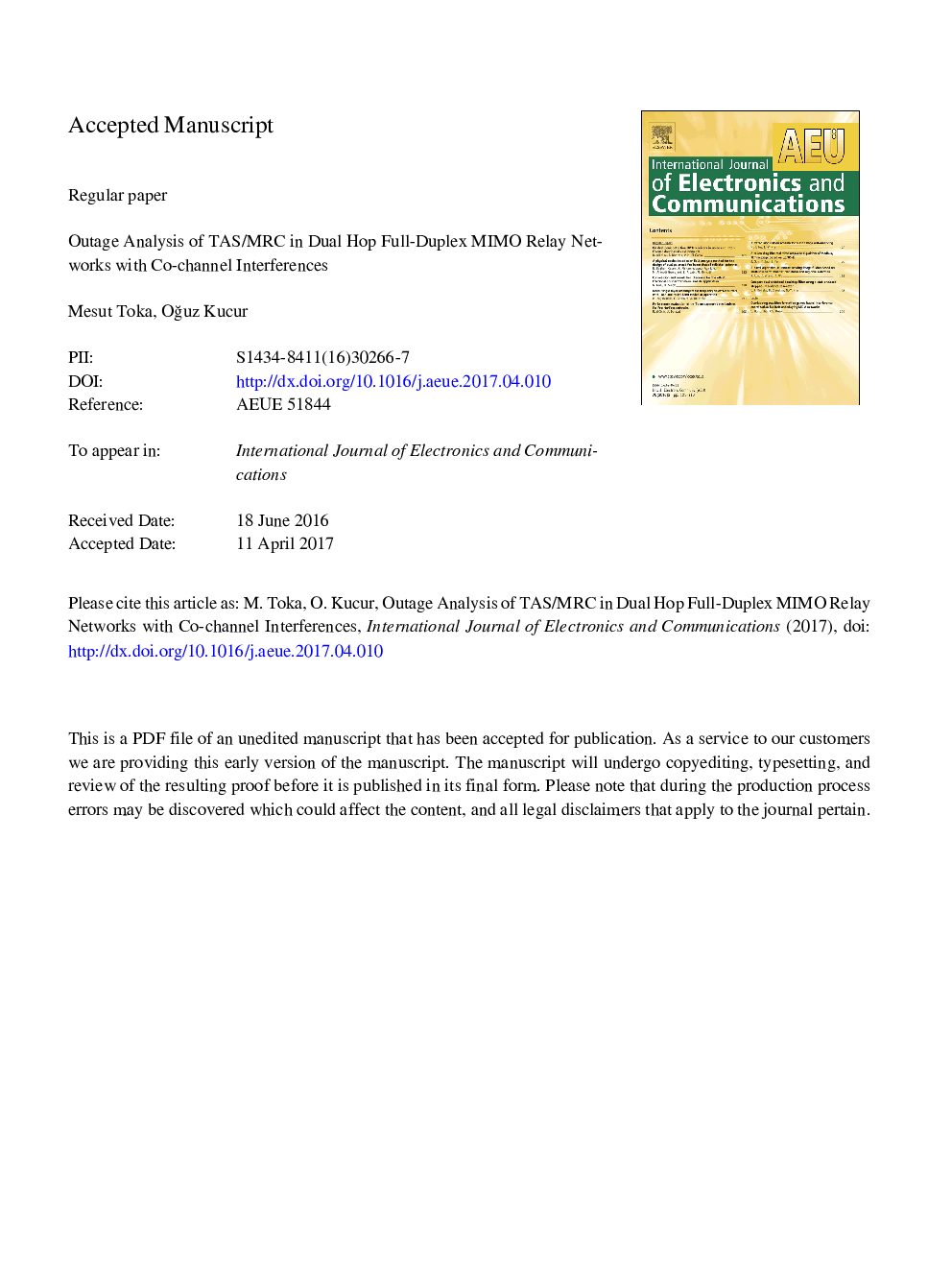| Article ID | Journal | Published Year | Pages | File Type |
|---|---|---|---|---|
| 4953907 | AEU - International Journal of Electronics and Communications | 2017 | 25 Pages |
Abstract
In this paper, we investigate the outage performance of transmit antenna selection (TAS) and maximal-ratio combining (MRC) in dual hop full-duplex (FD) amplify-and-forward (AF) relay network over Rayleigh fading channels. In the analysis, Rayleigh faded multiple co-channel interferers (CCIs) are also taken into account at the relay. In the network, source and destination are equipped with multiple antennas, and relay is equipped with one receive and one transmit antennas, respectively and source-destination link is not available. While the TAS is applied at the source without considering residual self-interference (RSI) effect, received signals at the destination are combined based on the MRC technique. For the analysis, we consider three approaches at the relay. In the first, we consider the received signal at the relay is corrupted by faded RSI and noise, in the second one, the RSI is considered as non-fading. In the last one, the noise is neglected. In all cases, the relay suffers from multiple Rayleigh faded CCIs. Outage probability (OP) expression related to all the cases is derived and obtained in single integral forms in case of the faded/non-fading RSI and in closed form in case of the noise neglected approach. Moreover, we also find asymptotic OPs and conduct effective diversity order analysis. The analytical results are verified by the Monte Carlo simulations. Results show that TAS decreases error floor at high signal-to-noise ratio (SNR) region and MRC provides diversity gain at low SNR region. In addition, approaches II and III are good approximations to approach I at low and high SNR regions, respectively.
Related Topics
Physical Sciences and Engineering
Computer Science
Computer Networks and Communications
Authors
Mesut Toka, OÄuz Kucur,
